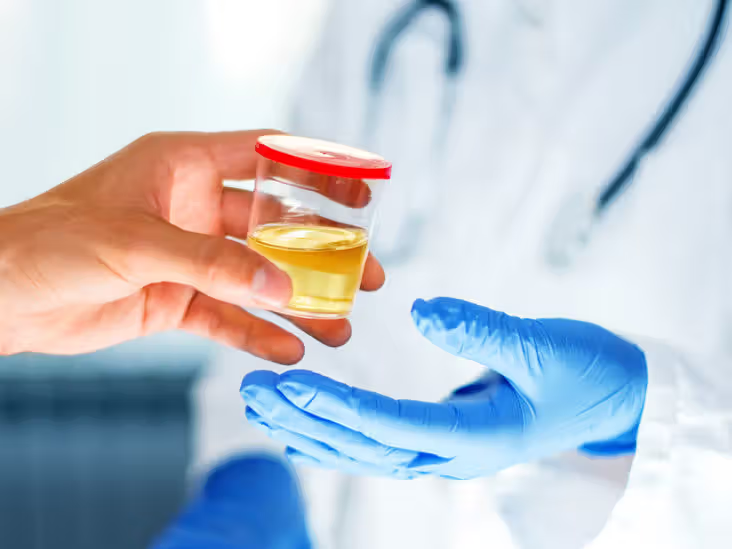Microalbuminuria – causes, diagnosis and treatment

What is microalbuminuria?
Microalbuminuria is a condition where there is a small increase in the amount of albumin protein in your urine. It can be an early sign of kidney disease.
It is not a diagnosis in itself – it has an underlying cause.
The test for microalbuminuria is called a urinary albumin-creatinine ratio (uACR). This test reflects the amount of a protein called albumin in the urine.
All humans have a little protein in the urine. But if uACR goes up, its is a sign of strain on the kidneys, and sometimes chronic kidney disease (CKD).
What is a normal uACR?
A ‘normal’ uACR level is lower than 3 mg/mmol.
So, for this test, a lower number is better. And a uACR level of 3 mg/mmol or higher is ‘microalbuminuria’ (small but abnormal amounts of albumin in the urine). It can be a sign that you will get higher levels of albuminuria later in the course of a kidney disease.
Causes of microalbuminuria
Microalbuminuria can be caused by kidney damage, which might happen if you have:
- Diabetes (type 1 or type 2)
- High blood pressure (hypertension)
- Pre-eclampsia in pregnancy
- A rare long-term kidney inflammation called glomerulonephritis. This is a group of autoimmune diseases that affect the glomeruli, which are the 1 million tiny filters in each kidney
- Obesity.
There are also things that can temporarily raise the level of protein in your pee and cause microalbuminuria, such as if you:
- Exercise vigorously
- Have a fever
- Are dehydrated.
Symptoms of microalbuminuria
If you have microalbuminuria, you will usually have no symptoms. This is because the albumin levels in your wee (urine) aren’t usually high enough to cause any symptoms.
You may notice microalbuminuria symptoms when the levels of albumin in your pee get higher.
At this stage, your pee may become foamy. When your kidneys are very damaged, your skin may get puffy. Sometimes, you may have swollen ankles, hands, tummy or face.
Because microalbuminuria doesn’t cause any symptoms, it’s important to have regular tests if have it (or are at risk of it).
For example, if you have diabetes, you should have a test for microalbuminuria once a year.
Diagnosis of microalbuminuria
The only way to confirm whether or not you have microalbuminuria is to have a urinary ACR test.
Your doctor should ask you to have a test every year if you’ve been diagnosed with diabetes or high blood pressure.
Your doctor may also ask you to have a test if you:
- Have a a heart attack or stroke or PVD
- Have CKD (or are suspected of)
- Are taking medicines that affect your kidney
- Have a family history of kidney disease
- Have had another urine test that’s found blood in your urine.
Treatment of microalbuminuria
The best treatment for microalbuminuria is to treat the underlying cause (e.g. diabetes, high blood pressure).
As well as that, your doctor may prescribe a type of medicine for high blood pressure, called an angiotensin converting enzyme (ACE; e.g. Ramipril) inhibitor or an angiotensin II receptor blocker (ARB; e.g. Losartan).
If your microalbuminuria is caused by diabetes, your doctor will prescribe one of these medicines even if you don’t have high blood pressure. This is because these medicines can help prevent any further damage to your kidneys.
If you have diabetes or high levels of albumin in your pee, your doctor may also prescribe a type of medicine called an SGLT2 inhibitor (e.g. Dapagliflozin). This will help to protect your kidneys and reduce your risk of cardiovascular disease.
If you have microalbuminuria, you are also at risk of problems with your heart and blood vessels (cardiovascular disease).
Because of this, your GP may prescribe a medicine called a statin. Statins lower your cholesterol, which can reduce the chance of having a heart attack or stroke.
Summary
We have described microalbuminuria, focusing on its causes, diagnosis and treatment. We hope it has been helpful.

